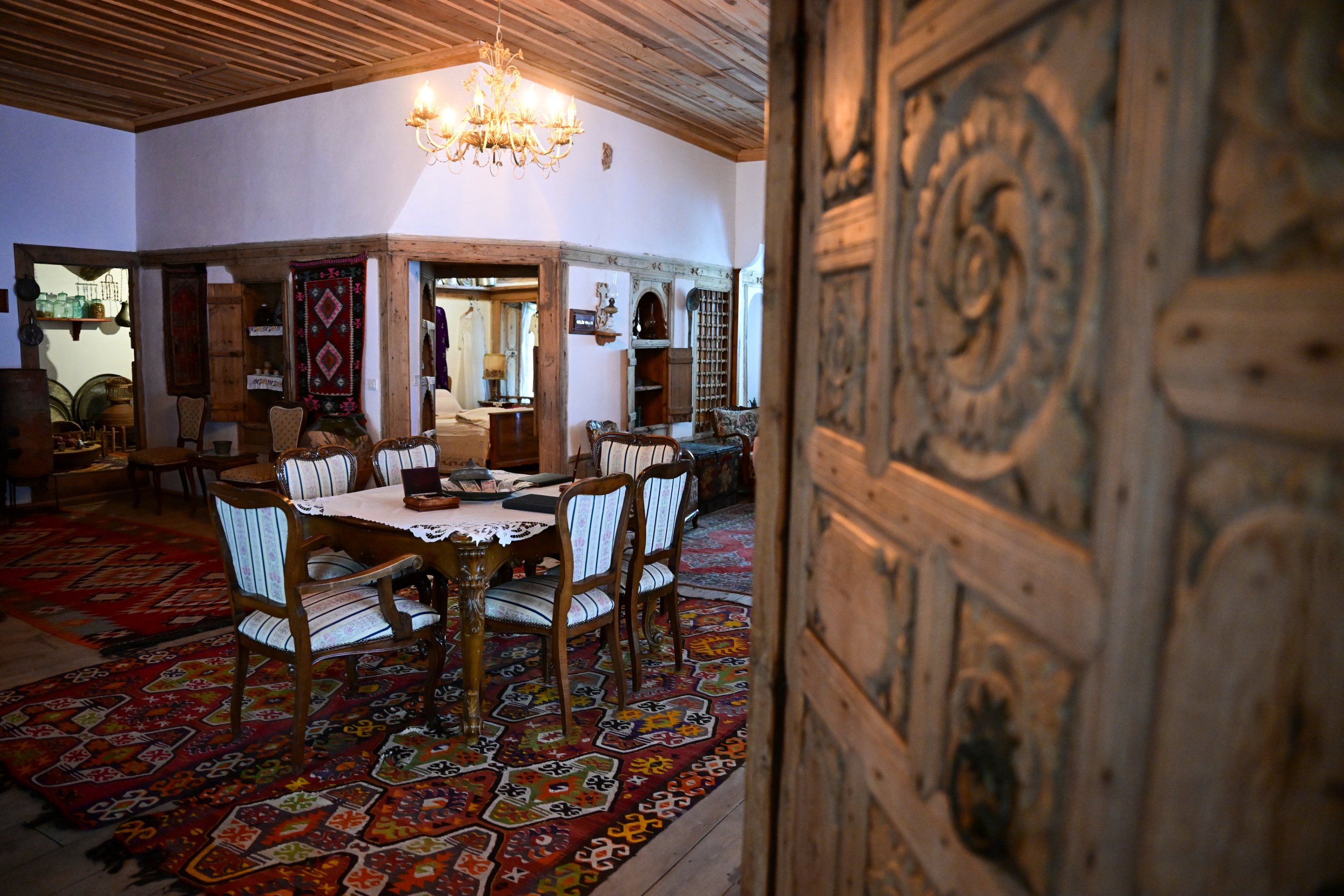© Turkuvaz Haberleşme ve Yayıncılık 2025
In the scenic Akseki district of Türkiye's Antalya, a 19th-century mansion that once housed large, extended families has found a new purpose. Restored with care and converted into the Akseki Ethnography Museum, this historic home now offers both local and international visitors a unique glimpse into the region’s cultural heritage.
Originally built in the 1800s using the region’s signature “düğmeli ev” ("buttoned house") technique, this three-story structure features nine rooms and once served as a shared residence for multiple families. After its restoration in 2012, the mansion opened to the public as a museum in 2016.
Since then, it has become one of Akseki’s cultural landmarks. With thoughtfully arranged exhibits, the museum allows guests to step into a bygone era – showcasing traditional ways of life, regional crafts, agricultural tools and everyday items that once filled the homes of local families.
While the museum has long attracted domestic visitors, in recent years, a growing number of international tourists have added it to their travel itineraries. Many who come to Antalya for its beaches and resorts are now seeking meaningful cultural experiences – and the Akseki Ethnography Museum has emerged as a rewarding stop.
Organized tours, student visits and travel groups frequently explore the museum, drawn by its rich stories and authentic atmosphere.
According to museum curator Sevim Ün, the building is more than just a preserved structure – it’s a vivid reflection of the family-oriented lifestyle that once defined the region.
“In this mansion, each room had its own bath, stove and storage space,” Ün explains. “Large families lived here together – sons, daughters, in-laws and grandchildren. If space became tight, the eldest son would move out to make room for his siblings. Everyone shared responsibilities, so modern concerns like ‘Who will care for the children or the elderly?’ simply didn’t exist. This house captures that strong sense of unity.”
Today, the museum houses over 3,000 artifacts, ranging from rare household items and traditional cooking tools to a 200-year-old coal iron used during travel and a 100-year-old fruit leather made from sour plums. Each object tells a piece of Akseki’s story.
For many, a visit to the museum is a personal and emotional experience. "People often say they recognize something from their own past here,” Ün says. “It’s not just about history – it’s about memories, about lived experiences. Some even ask if they can stay the night. Since we opened, more than 10,000 people have visited.”
The museum's charm isn’t lost on its foreign guests. Renata Krol, a tourist from Poland, said she was eager to visit after hearing about it. “It’s my first time in a traditional Turkish house, and I’ve seen many interesting things here. The woodwork, the embroidered doors — the details are beautiful.”

Her fellow traveler, Jan Ziölkowski, agreed. “I especially liked the main salon. We had a wonderful time. I’d love to come back.”
Tour guide Anastazja Kurovich, who leads groups through Antalya, Alanya and Side, noted a rising demand for cultural stops. “This museum has been a favorite among our group. They were fascinated by the items and appreciated the preserved atmosphere. It’s clear a lot of care has gone into this place – it deserves even more attention.”
Fellow guide Özgür Çelikkol, who led a group from Alanya, emphasized the broader importance of such initiatives. “Protecting cultural heritage and passing it on to future generations not only honors history – it also strengthens tourism.”
